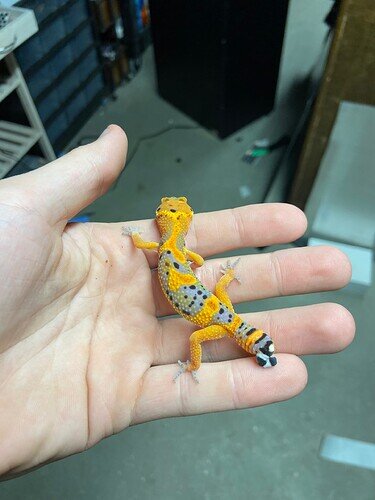I’m curious to hear peoples opinions on breeding geckos that hatch out with tail kinks due to incubation issues, but due to a genetic deformity.
Personally if the gecko has a very slight tail kink towards the tip that I know was caused by fluctuations in temperature while incubating I see no problem with breeding. If the tail kink is a little more severe and is farther down on the tail I like to sell those as pets.
I’m just wondering what you guys do with your geckos that hatch out with tail kinks.
An example of a male I hatched that due to incubator temp. fluxes came out with a kinked tail and probably won’t breed and will be sold as a pet.
an example of a female with a slight tail kink that I do intend to breed. Also cases by incubation fluctuations.
1 Like
This is an interesting question. I can see both sides of it. On one hand, why would you breed something that has a deformity. On the other hand, it really doesn’t change anything if it’s a minor kink and not genetic. I definitely wouldn’t breed something that has a tail kink towards the base of the tail. That could be deadly for egg laying and/or breeding and the eggs/organs could get stuck there. But, if it’s a minor kink that is from incubation I think it would be completely safe. That raises two more questions. How do you know if a kink is from incubation or if it’s genetic, is it due to the size of the kink, inbreeding history, or don’t you know? Is there really any harm in breeding a gecko with a severe tail kink, as long as it doesn’t affect egg laying/breeding, does it really matter? These are just some hypothetical questions, but they are important to think about and I’m not sure how I stand on them myself. A tail kink isn’t as severe as a spinal kink, which could impact or put pressure on organs or cause other problems. I would never breed a gecko with a kink on the spine or at the base of the tail.
5 Likes

